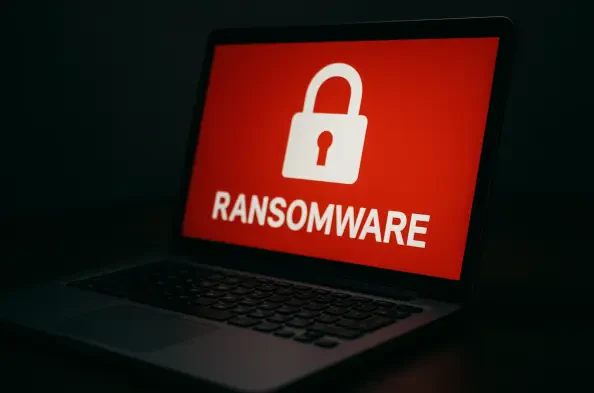Welcome to an in-depth conversation with Vernon Yai, a renowned data protection expert with extensive experience in privacy protection and data governance. With a career dedicated to risk management and pioneering innovative techniques to safeguard sensitive information, Vernon is uniquely positioned to shed light on the recent ransomware attack that struck the state of Nevada. In this interview, we explore the intricacies of the attack, the immediate response strategies, the impact on state systems and citizens, and the collaborative efforts underway to recover and prevent future incidents. Join us as we dive into the challenges and critical lessons from this significant cybersecurity breach.
Can you walk us through what unfolded on August 24 when the ransomware attack was first detected in Nevada?
Certainly. On August 24, Nevada’s IT teams noticed unusual activity on their networks—think of it like spotting a stranger rummaging through your house. There were signs of unauthorized access and data movement that didn’t align with normal operations. Alerts from monitoring systems likely flagged these anomalies, prompting immediate concern. The state’s response was swift; they didn’t wait to confirm the full extent before acting. Within hours, key systems were taken offline to contain the threat. That quick decision-making was crucial in limiting how far the attackers could spread within the network, though it did disrupt public services.
What immediate actions were taken to secure Nevada’s systems once the attack was identified?
Right after detection, the priority was containment. Taking systems offline was a bold but necessary move—it’s like locking all the doors during a break-in to stop the intruder from getting deeper into the house. This helped prevent further encryption or data theft by cutting off the attackers’ access. While it halted the spread to some extent, it also meant government offices and digital services were unavailable, causing frustration for residents. The trade-off was clear: short-term inconvenience for long-term security. Teams also began isolating affected systems and deploying backups where possible to assess the damage.
How would you describe ransomware and its specific impact on Nevada’s state networks?
Ransomware is essentially a digital hostage situation. Attackers infiltrate a system, encrypt critical files, and demand payment—often in cryptocurrency—for the decryption key. In Nevada’s case, it crippled state networks by locking up data and disrupting access to essential services. What makes it so dangerous for government systems is the sheer volume of sensitive information they hold, from personal records to infrastructure data. While specifics on which systems were hit hardest aren’t fully public yet, it’s likely that anything tied to public-facing services—think DMV or unemployment portals—felt significant disruption due to the broad scope of the attack.
There’s been confirmation that data was stolen during this attack. Can you elaborate on what that might mean?
Yes, the state’s CIO confirmed that attackers exfiltrated data, which means they copied and removed information from the network before or during the encryption process. At this stage, it’s unclear what was taken—could be anything from employee records to citizen data like Social Security numbers or tax information. The challenge now is a painstaking analysis to catalog exactly what’s missing. Teams are likely using forensic tools to trace file access logs and identify compromised datasets. Until that’s complete, the full risk to individuals remains unknown, but the potential for identity theft or data leaks on the dark web is a real concern.
What measures are being put in place to protect citizens’ personal information following this breach?
Protecting citizens is a top priority post-breach. Right now, the state is focused on identifying if sensitive personal information was part of the stolen data. If it was, they’ve committed to following proper protocols, which typically means notifying affected individuals directly and providing clear guidance on next steps. This could include offering free credit monitoring services or fraud alerts to help people safeguard their identities. Additionally, I’d expect them to set up hotlines or online resources for residents to check if they’re impacted and get support. Transparency and proactive communication are key to maintaining trust during a crisis like this.
How long do you anticipate it will take to fully restore Nevada’s state services, and what hurdles are in the way?
Restoring services is a delicate balance of speed and security. It could take weeks, if not months, to get everything back to normal, depending on the extent of the damage and the complexity of the systems. The biggest hurdles are ensuring that no lingering malware or backdoors remain before bringing systems online—rushing this risks a second attack. Additionally, rebuilding from backups, if they’re even usable, takes time, especially for large government networks. The state is under pressure to move quickly due to public frustration, but they’ve emphasized a meticulous approach to avoid compromising security for the sake of speed.
Can you tell us more about the team leading the investigation into this ransomware attack?
The investigation is a collaborative effort involving a mix of expertise. State IT staff are on the ground, working alongside third-party forensic specialists who bring specialized tools and experience in dissecting cyberattacks. Federal partners, including agencies like the FBI, are also involved, likely focusing on tracking the perpetrators and analyzing attack patterns. These groups work in tandem—state teams provide context about their systems, while external experts offer an objective, technical deep dive into how the breach occurred and what was accessed. It’s a complex puzzle, and every piece of insight helps build a clearer picture.
What role is the Cybersecurity and Infrastructure Security Agency (CISA) playing in Nevada’s recovery efforts?
CISA has stepped in with critical support, offering real-time incident response at no cost to the state. Their Threat Hunting teams are actively scouring Nevada’s networks to identify and eliminate any remaining threats—think of them as digital detectives looking for hidden traps left by the attackers. Beyond that, CISA is coordinating broader recovery efforts, advising on federal resources like emergency grants through FEMA. Their involvement ensures Nevada isn’t tackling this alone and brings a national perspective to the response, which is vital for understanding if this attack is part of a larger trend targeting government entities.
With other federal agencies like the FBI and FEMA also assisting, how do their contributions fit into the bigger picture?
Each agency brings a unique piece to the table. The FBI’s role is primarily investigative—they’re working to identify the attackers, trace their methods, and potentially link this incident to known cybercriminal groups. Their expertise in cybercrime helps build a case for prosecution if the perpetrators are identified. FEMA, on the other hand, focuses on emergency response, guiding Nevada on accessing federal funding or resources to manage the fallout and restore services. Together with CISA, they form a unified front, addressing not just the technical breach but also the operational and legal ramifications, ensuring a comprehensive recovery.
Looking ahead, what is your forecast for the future of ransomware threats against government systems?
I’m concerned but cautiously optimistic. Ransomware attacks on government systems are likely to increase in frequency and sophistication—attackers see these targets as high-value due to the critical data and services involved, plus the pressure to pay ransoms to restore public access. We’ll probably see more coordinated campaigns exploiting vulnerabilities in aging infrastructure. However, incidents like Nevada’s are wake-up calls. They push governments to invest in stronger defenses, better training, and updated systems. I foresee a growing emphasis on public-private partnerships and federal support to build resilience. If we can stay ahead of the curve with proactive measures, we can turn the tide against these threats.






